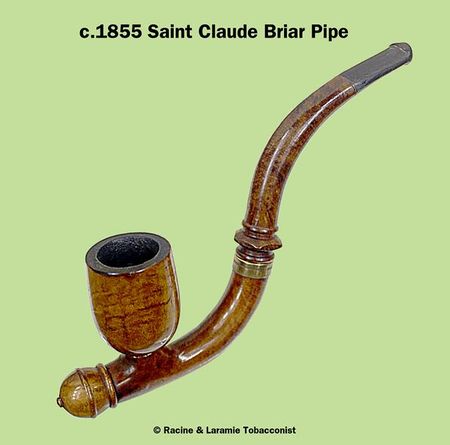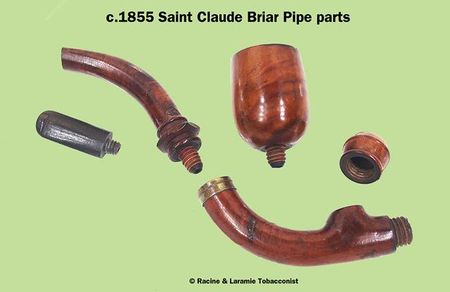Saint-Claude
The following submission is courtesy of Racine & Laramie Tobacconist:
As early as the Middle Ages an established place of pilgrimage in Eastern France was the monastery of abbot Saint Claudius. In medieval iconography Saint Claudius was the patron saint of toymakers. The town that grew servicing the pilgrims was Saint Claude. The pilgrims arrived from all over the Christian world, and the towns people made mementos for sale and lived off business from the pilgrims.
The town also produced snuff and pipe stems made of boxwood, bone, horn and amber which they sold to Switzerland, Germany, and Austria. In time Saint Claude became a thriving centre of wooden souvenirs, gem-setting, and luxuriously-carved pipe stems.
According to local legend a Saint Claude turner named David is credited with the making the first briar pipe. The souvenir industry of Saint Claude supplied all the manufacturing preconditions for the making of the briar pipe. The firm of Jeantet as early as 1807 was making and selling German type porcelain pipes, Ulm-type wood pipes and meerschaums from local wood and horn. The contemporary technology determined the shape of the pipes, and they were typically composed of wood-turned parts.
Local records indicate that in 1841 there were three pipe-making firms employing twenty workers. 1854 is the year ascribed to the beginning of pipes made from briar. The pipe illustrated here is one of those early briar pipes made from wood turnings with the same construction as the contemporary pipe stems.
It appears that this pipe was marketed to the pilgrim trade. We conclude this because of it’s lack of finish: the horn mouthpiece is not polished and shows file marks, the grade of the briar is low with large pits whose fillings have since fallen out, the wood is enameled not polished and all the connectors are wooden or horn screws. Of interest is the lip on the horn bit, it is a button lip.
Reference: Ferene Levárdy, Our pipe-Smoking Forebears, 1994, Druckhaus Oberpfalz, Germany
- Saint Claude briar pipe c.1855, courtesy Racine & Laramie Tobacconist

